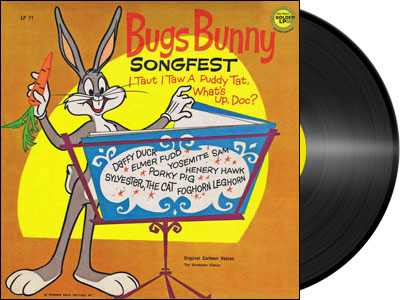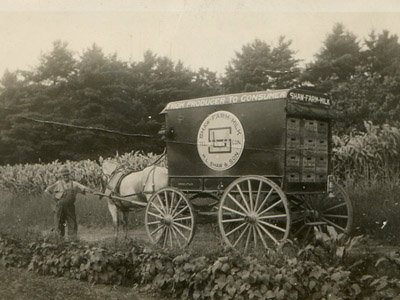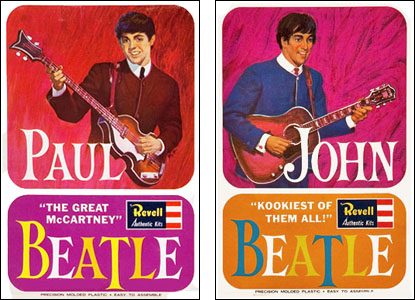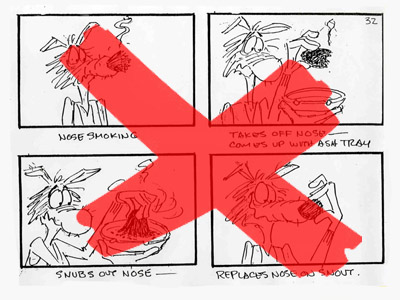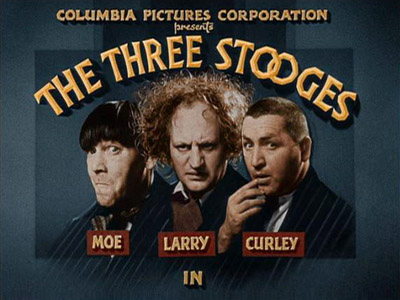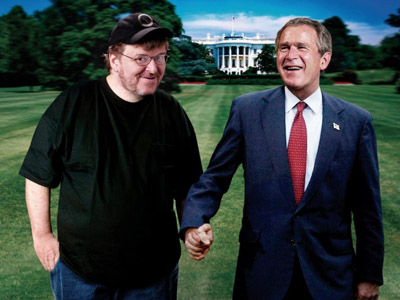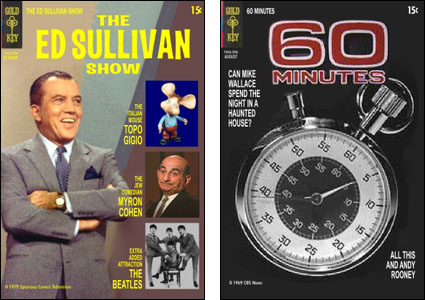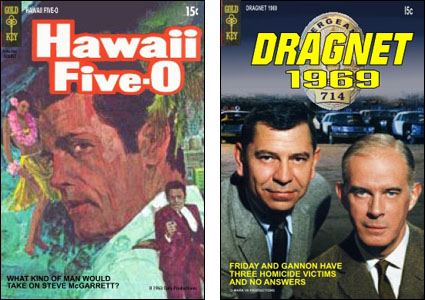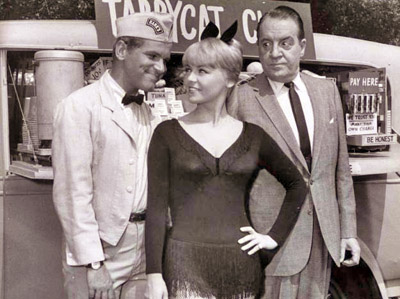
If I've learned anything in this world — and I'm sure we all agree that's a pretty big "if" — it's not to waste a lot of time with service people who cannot help you. As I found with my recent dispute with a local supermarket, when you call Customer Service, you're dealing with people with very limited power. Often, they're transitory employees who have a little manual or a little training that covers most contingencies. They're told that if you say A, they're supposed to say B — and if your situation doesn't happen to be in that curriculum…well, too bad. They're not authorized to do much more than kick you over to a "supervisor" who, as often as not, can't go much farther than the same established Rules for Handling Jerks on the Phone.
To get anywhere, you often have to bypass these people. Here's our latest object lesson which came about because the drinking water in my area is undrinkable. I don't know why, in a time when we can all remember drinkable water emanating from our taps, there is not more outrage about this. Amazingly, there are still people in this world who, over a glass of store-bought Dasini, will complain about bleeding-heart environmentalists…but that is not the immediate concern here. The immediate concern is me getting water to drink into my home.
For a few years there, I did it via Sparklett's. A man would come every two weeks and leave me two five-gallon bottles of water for the cooler which his company was renting me. Sometimes, often because I'd been away, I'd find myself with four or five bottles taking up space so I'd call up and use the little service via which you tell them to "skip a delivery." When I did this, they often did not skip a delivery. Most of the time, I'd come home and find two more bottles on my step. I called up. I left notes. It rarely mattered what I did. My delivery guys (they kept changing) seemed programmed to replace X empty bottles with X full ones, as long as they were leaving a minimum of two. When I complained, I got a lot of apologies but they told me that they weren't allowed to take back water after it had already been delivered. So, too bad, but you're stuck with the bottles, Mark…and by the way, here's the bill for all that water you won't get around to using for months.
Finally one day, I put out my empties with a big note taped to them on which I'd lettered big, angry letters that spelled out, "DO NOT LEAVE ANY WATER THIS TIME!" I heard the delivery man stop by and pick up those bottles. A little later when I went outside, I found he'd left two full ones…and the note was lying on the ground under one of them. I went in, called Sparklett's and told them to get the guy back to pick up his water and the overpriced cooler and to cancel service. A lady said, "We can't get the delivery man back there today, but we'll cancel your service and have him pick up the cooler on his next run through your area in two weeks."
I informed her that I was putting the cooler out on the curb. Within ten minutes, the delivery guy was at my door to apologize and pickup the cooler…and he also took back all my unopened water, which I'd been told they weren't allowed to do.
That was a few years ago. Since then, I've bought these crummy plastic gallon jugs of water at the market. They're a pain to carry and they often leak. Often, since they're bottled in high-density polyethylene, the water picks up a stale plastic taste. The smaller bottles are usually made of polyethylene terephthalate (a term I just cut-and-pasted from the Consumer Reports website) and they keep the water fresher but they're more expensive and harder to handle. I also tried Brita pitchers with the built-in filters but the H2O here is so bad, even Brita pitchers don't make it palatable. I finally decided to buy my own cooler (from Costco, the coffin merchants) and give home delivery another try.
I found out that my choices were limited. There are dozens of different water companies listed in the Yellow Pages but they all turnout to be Sparklett's hiding under various names and offering the same Sparklett's product from the same Sparklett's truck. The few that aren't Sparklett's are Arrowhead, and I've never liked the taste of Arrowhead as much as Sparklett's. So I decided to see if I could just order a few bottles of Sparklett's water on a pay-as-you-go basis. If I liked it and the service, then I could sign up for regular delivery.
Or so I thought.
The person I spoke to on the phone tried to sign me up for regular service. When I refused and asked if I could just order some water (and their website sure makes it look like you can), he acted like he'd never heard of such a thing…then said yes, sure, absolutely — they could do that. I placed a "one-time order" for two 5-gallon bottles plus a case of half-liter bottles. Total price, charged to my credit card: $24.97. The water was delivered the next day.
That was on October 6. Yesterday, I received a bill from Sparklett's for $2.71. This covers a "Basic Service Charge" of $1.75 and a Redemption Value of 96 cents for the two bottles. I immediately phoned Sparklett's and after being on hold for an indecent period of time, asked why wasn't I advised of these charges at the time I placed my order. In fact, I asked this of a couple different folks who routed my call around until a lady (allegedly a "supervisor") informed me they were standard charges and that the Redemption Value charge (which is a deposit) is a state law. I said, "Fine. Now, why wasn't I advised of these charges at the time I placed my order?" She apologized but had no answer other than to explain that's the way things work at Sparklett's. Apparently, it's my fault for not understanding how they do business. I suggested to her that if they'd told me then, I would have had the option to not place the order. (Kind of hard to cancel it now that I've started drinking that water.) And if I agreed to the order, we could have charged the $2.71 to my credit card along with the rest of the cost, thereby saving them the time and trouble of sending me a bill and saving me the time and trouble of writing out a check, putting a stamp on it, etc. She said she'd look into that, which of course means that she won't look into that and is just trying to pacify an irate customer.
I also found out that I was scheduled to receive two more bottles on 10/20/04 and two more on 11/03/04 and so on. I explained to her that I'd placed a one-time order and she said, "Oh, no. We don't do one-time orders. You signed up for regular delivery." Again, it's my fault for not understanding how their company works.
By now, I've learned to move up the chain of command. This morning, I called the Sparklett's executive offices…and it took a lot less time to get a senior exec on the phone than it had to call their 800 number and talk to the other end of the pecking order. A very nice man took at least twenty minutes to explain, apologize…and explain about their business to me. (He spent about five of those minutes explaining to me why they switched from glass bottles to ones made of polycarbonate.) He put the blame on the sales rep who led me to believe they deliver water on anything but an ongoing basis, he made sure my next delivery was cancelled, and he even told me something that made me think it might be possible for me to resume regular Sparklett's service. The last time I subscribed, they had a minimum order of two bottles per every-other-week delivery, and I sometimes couldn't use it all up before the next delivery date, so I had to deal with bottles piling up. Now, I've learned, the minimum is one bottle per drop-off. I can easily handle that, and it would be much easier to order additional water when I need it than to ward off routine deliveries when I have too much. No one on the Customer Service line even thought to suggest I sign up on that basis. So the exec may have snagged a customer, whereas the underling gave me no reason to buy their product.
It also matters to me that I spoke to someone who could perhaps change the way they do business. The folks on the Customer Service phone really only care about pacifying irate callers — that's all they're assigned to do — not about effecting structural improvements to the company. As with my supermarket problem, I felt I'd reached someone who genuinely cared, not just about keeping my business, but about figuring out why their system had alienated a customer. No, I don't think anything will change just as a result of my call…but my complaint was treated with respect and there's at least the chance that an accumulation of such calls will matter.
So that's pretty much the story. I wish more companies would learn that Customer Service is not something that can always be done by the book…or outsourced, which is another problem I've encountered. Since they do it the way we do it, we have to all learn to go…well, not necessarily to the top. But to at least a few levels above the bottom. Everyone I spoke to was very nice but in order to get something done, you have to go to someone who's empowered to get something done.
[P.S., added years later: Eventually, Sparklett's just started bringing me as many bottles of water as they felt like leaving on my porch. I cancelled them out forever, bought a crockpot and now I fill it with gallon bottles of Crystal Geyser spring water I buy at Ralphs or Smart & Final. Much simpler…and better water.]

